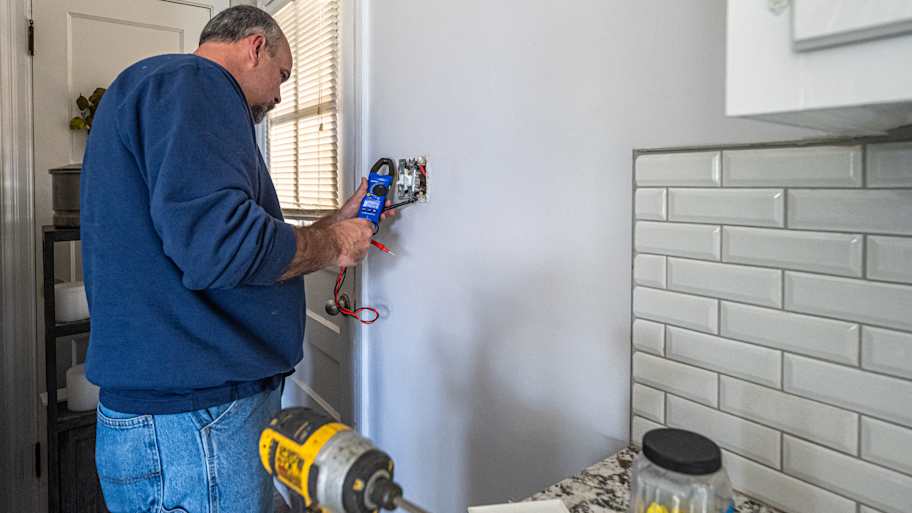What Are Blackout Curtains and How Do They Work?
Go from day to night with these multifunctional window treatments


Though blackout curtains are most well known for their ability to completely block out light, they have a number of additional and unexpected advantages. Capable of everything from shutting out unwanted noise to reducing your energy bill, these thick, heavy drapes are practically the Swiss army knife of window treatments.
Despite the many pros, there are still a few downsides worth considering before investing in blackout curtains. Use this guide to determine if they’re really the right choice for your home.
What Are Blackout Curtains?
Blackout curtains are characterized by a double-lining made from tightly woven fabric. This material blocks out up to 99.9% of light and UV rays and is typically heavier and thicker than other room-darkening window treatments. As long as blackout curtains are hung correctly—without any gaps to let light through—they will completely darken your space.
Pros and Cons of Blackout Curtains
Pros of Blackout Curtains
In addition to blocking out light, there are a handful of other benefits that blackout curtains offer, like reducing sound pollution and protecting your home interior from sun damage.
They Reduce Energy Costs
Blackout curtains regulate a home’s internal temperature, keeping it warm in cold weather and cool in hot climates. Along with making your abode feel more comfortable, this will also have an impact on your energy bill. About 30% of heating energy is lost through windows, according to the Department of Energy, and you can win back this amount or more from making the switch to blackout curtains.
They Minimize Sound Pollution
Blackout curtains are made up of multiple layers of fabric that are almost as good at blocking out sound as they are at blocking out light. While they aren’t 100% soundproof, they can be enough to drown out sounds in especially noisy areas.
They Protect Furniture and Flooring from Sun Damage
Any furniture and flooring that’s consistently exposed to sunlight is at risk of developing sun damage over time. But installing blackout curtains is an easy way to reduce this threat. Aim to keep blackout curtains closed whenever a space isn’t in use to get the most out of this benefit.
Cons of Blackout Curtains
But the window treatment comes with a couple drawbacks as well.
They Can Be More Expensive Than Standard Curtains
In general, curtain prices range from $20 to $300 per set, and blackout curtains typically fall on the high end of this range. The more you pay, the higher the quality will be. Though you may save upfront on inexpensive blackout curtains, you’ll pay more in the long run if they don’t function as intended.
They May Block Too Much Light
If you already live in a home with minimal natural light, investing in blackout curtains will make your home even darker. Their very presence will dim the area around your windows even when they aren’t completely closed. Though this isn’t necessarily a con for everyone, it’s definitely something to consider if you thrive on sunshine.
What to Consider When Buying Blackout Curtains

There are several factors to keep in mind when browsing options for blackout curtains. From the color to the quality of the fabric, this is what you should be looking for.
Color
Blackout curtains don’t have to be black. In fact, this type of window treatment is available in countless shades, all of which can have a different impact on the artificial light in your space. When choosing a color, think about the effect you want it to have.
Though you’re trying to block out the light, you may still enjoy a bright yellow shade for its sunshiney vibes. And white blackout curtains are a great option for darkening and lightening your space at the same time.
Fabric Quality
If the fabric quality isn’t up to snuff, your blackout curtains will never block out light as they should. When in doubt, opt for a weight material that guarantees coverage, like polyester or a combination of polyester and cotton.
Check the Label
Though some window treatments may appear to be blackout curtains, it’s always a good idea to take a closer look at the label. If it doesn’t list 99.9% light coverage, odds are you’re dealing with a room-darkening or light-filtering treatment in disguise.
How to Transform Your Existing Window Treatments Into Blackout Curtains
Transforming your current window treatments into blackout curtains is a relatively easy project to DIY. In order to do so, you’ll need to purchase an adhesive blackout lining and apply it to the outward-facing side of your existing curtains.
And lining prices range from just $8 to $10 per yard, meaning that making your own blackout curtains will be considerably less expensive than buying them premade.
Can Blackout Curtains Be Cleaned?
Yes, but not in the washing machine. Instead, you’ll want to delicately vacuum and spot clean the same way you would clean your finest area rug. As long as you take care to remove any spots or stains the moment you notice them, and schedule annual or biannual cleaning sessions, you’ll be able to enjoy the room darkening benefits of this investment for years to come.






